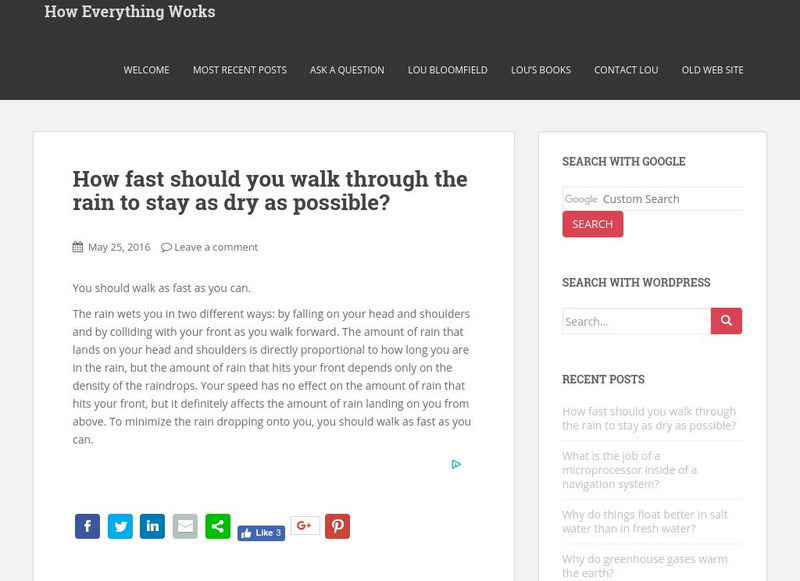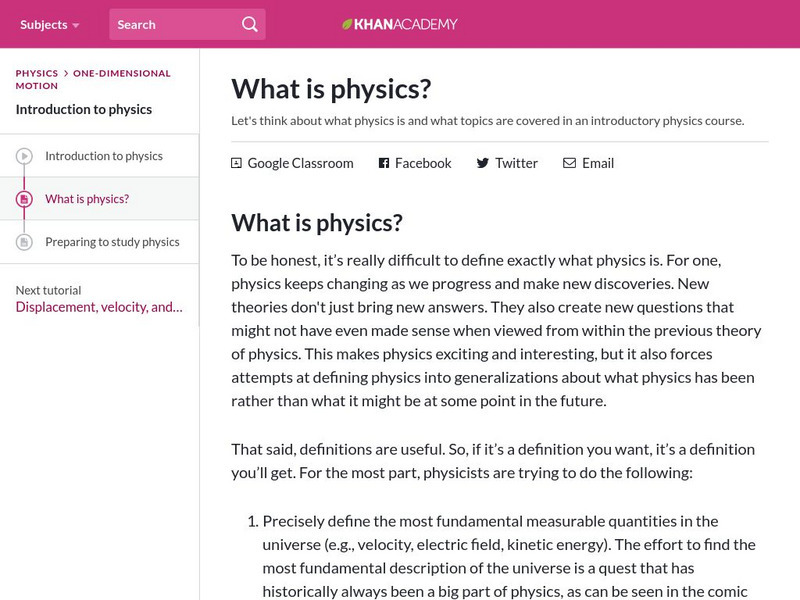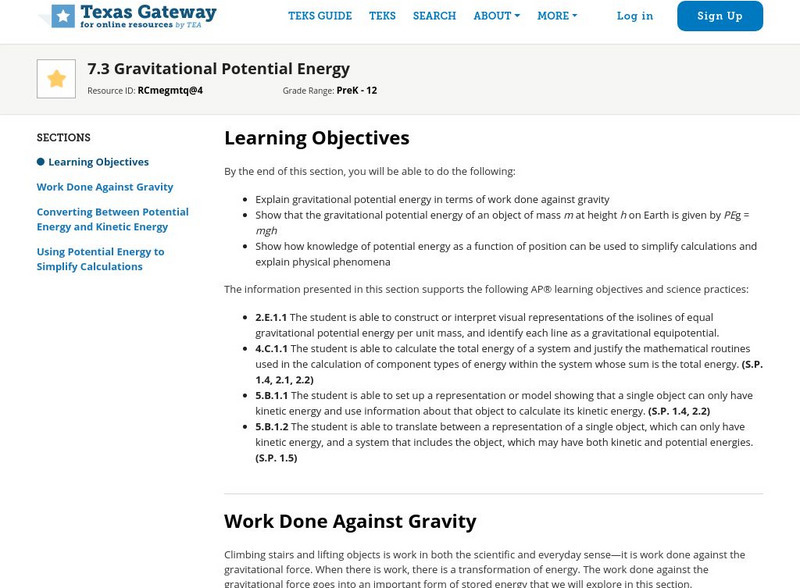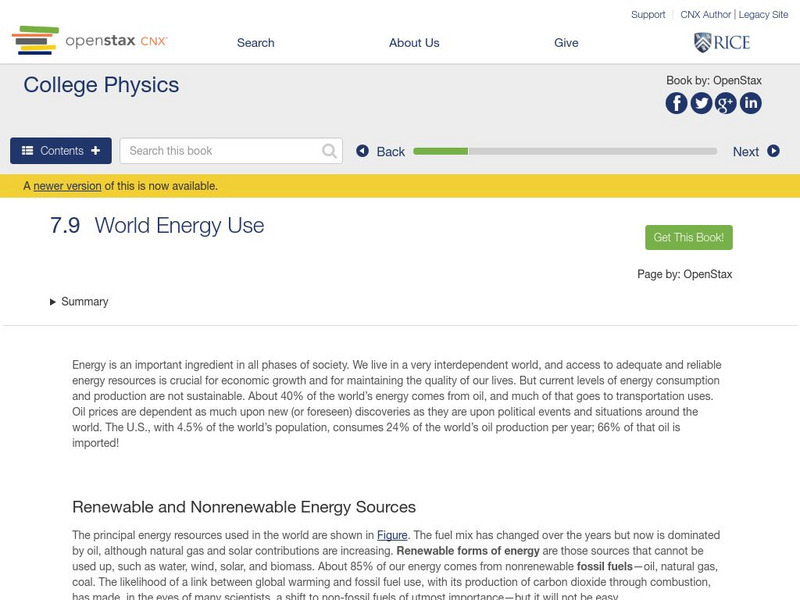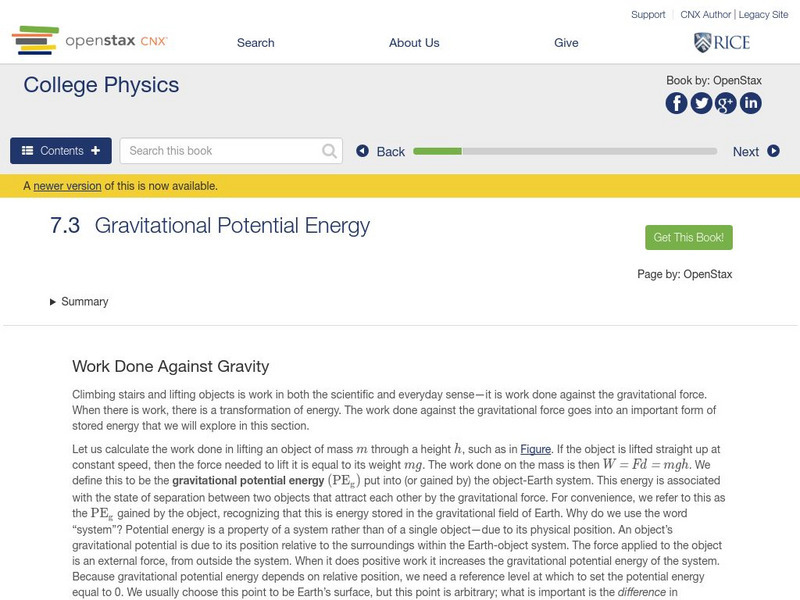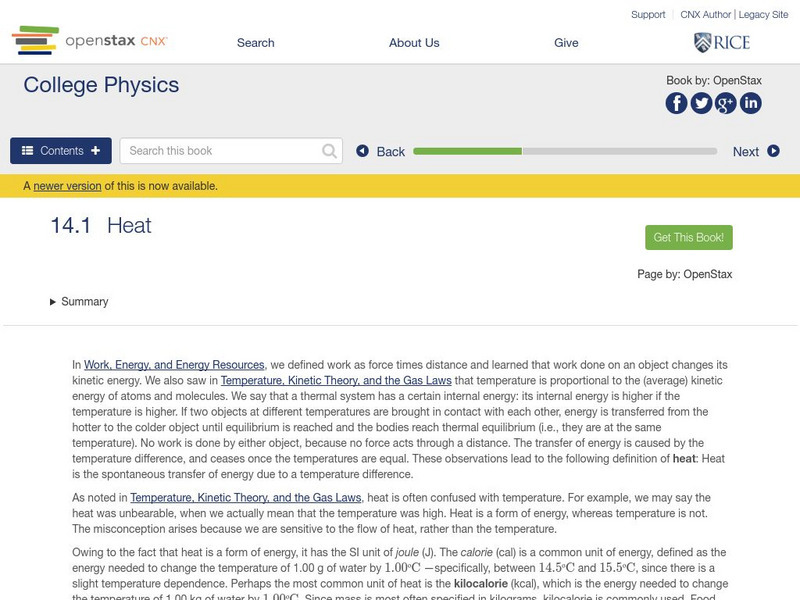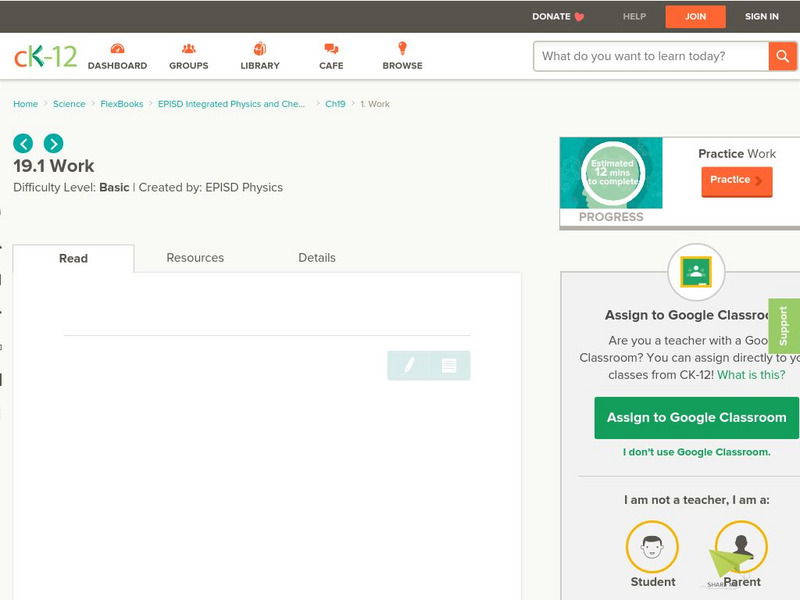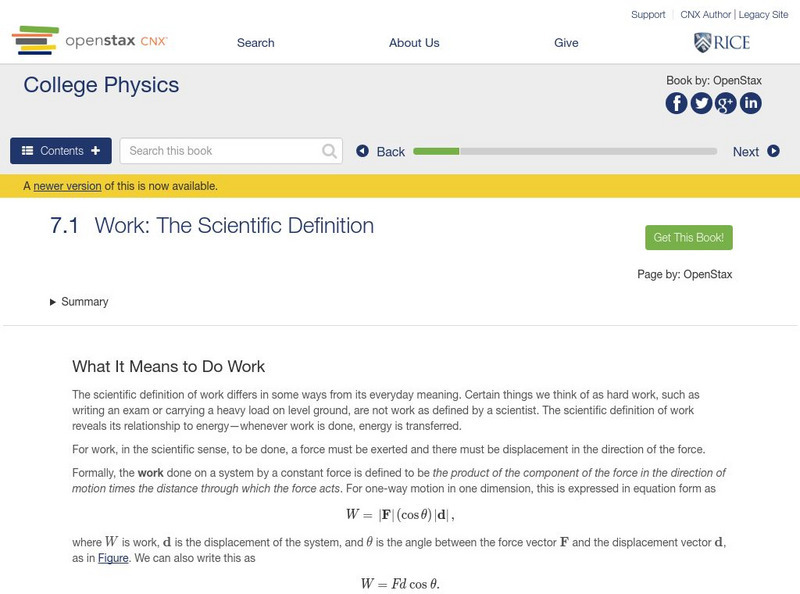Hi, what do you want to do?
Other
University of Virginia: How Things Work
A site maintained by A. Bloomfield, the author of "How Things Work: The Physics of Everyday Life." You can read old questions or ask Bloomfield your own. Great explanations of everyday physics.
Physics Classroom
The Physics Classroom: Work, Energy, and Power: Power
In this interactive module, students learn the basic terminology and concepts of power as it has to do with work and energy.
Physics Classroom
The Physics Classroom: Work, Energy, and Power: Mechanical Energy Is Conserved
In this interactive exercise, explore the quantitative relationship between work and mechanical energy in situations in which there are no external forces doing work.
Physics Classroom
The Physics Classroom: Work, Energy, and Power: Application/practice Questions
Through illustrated examples and practice problems, students apply the relationship between work and mechanical energy change to a variety of motion scenarios in order to test our understanding.
Physics Classroom
The Physics Classroom: Chart That Motion
This activity is an online, interactive energy bar chart tool that assesses student understanding of the work/energy relationship.
Physics Classroom
The Physics Classroom: Work, Energy, and Power: Internal vs. External Forces
Through illustrated examples and interactive examples, students learn about the two categories of forces are referred to as internal forces and external forces.
Khan Academy
Khan Academy: What Is Physics?
Article attempts to answer the question "what is Physics?" Takes a look at concepts such as force, motion, Newton's Laws, work, energy, and much more.
OpenStax
Open Stax: Rotational Kinetic Energy: Work and Energy Revisited
From a chapter on Rotational Motion and Angular Momentum in a Physics textbook. This section of the chapter discusses developing an equation for rotational work, how to determine the rotational kinetic energy along with a problem-solving...
Yale University
Open Yale Courses: Fundamentals of Physics
Intended for students with a strong math and science background, a course introducing physics concepts of Newtonian mechanics, special relativity, gravitation, thermodynamics, and waves. Twenty-four class sessions in video format are...
Nobel Media AB
The Nobel Prize: The Nobel Prize in Physics 1961 Presentation Speech
The speech given by Prof I. Waller at the presentation of the Nobel Prize to Robert Hofstadter. Details the work both of Hofstadter and of Rudolf Mossbauer, who shared the prize. Elegantly said, with plenty of scientific detail.
Texas Education Agency
Texas Gateway: Ap Physics: Gravitational Potential Energy
By the end of this section, you will be able to explain gravitational potential energy in terms of work done against gravity, show that the gravitational potential energy of an object of mass m at height h on Earth is given by PEg = mgh,...
OpenStax
Open Stax: World Energy Use
From a chapter on work and energy in a Physics textbook. This section of the chapter covers the difference between renewable and nonrenewable energy resources, the growth in the world's energy consumption, and the link between energy use...
CK-12 Foundation
Ck 12 Exploration Series: Simulations: Physics: High Energy Particles
[Free Registration/Login Required] A video module that allows students to uncover the relationship between speed and kinetic energy in the context of a particle accelerator.
OpenStax
Open Stax: Gravitational Potential Energy
In the following tutorial, students learn about gravitational potential energy in terms of work done against gravity. They will be able to show how knowledge of the potential energy as a function of position can be used to simplify...
CK-12 Foundation
Ck 12 Exploration Series: Simulations: Physics: Ramp and Piano
[Free Registration/Login Required] This module has students using a simple machine to learn about the relationship between work, force, and energy.
OpenStax
Open Stax: Conservation of Energy
In the following tutorial, students will learn about the law of conservation of energy. They will read about some of the many forms of energy. They will understand the definition of efficiency of an energy conversion process as the...
CK-12 Foundation
Ck 12: Conservation of Energy
[Free Registration/Login may be required to access all resource tools.] Students investigate how all types of energy, including work, relate to each other and are conserved in a closed system.
OpenStax
Open Stax: College Physics: Heat
In this section of the textbook, find information about how heat and work transfer energy. Also understand how a heat transfer is related to temperature and what mechanical equivalent of heat relates to work and heat transfer. Book can...
CK-12 Foundation
Ck 12: Work
[Free Registration/Login may be required to access all resource tools.] In this module, calculate work and explain how it relates to the overarching idea of energy.
OpenStax
Open Stax: Work: The Scientific Definition
In the following interactive students will begin to explain how an object must be displaced for a force on it to do work. They will also explain how relative directions of force and displacement determine whether the work done is...
Khan Academy
Khan Academy: Rollercoasters Are Energy at Work!
This passage will test your knowledge on work and energy.
Physics Classroom
The Physics Classroom: Energy Relationships for Satellites
The orbits of satellites are described and an energy analysis is performed. Kinetic, potential and total mechanical energy are explained and applied to the motion of satellites.
Georgia State University
Georgia State University: Hyper Physics: Conservation of Energy
This site is from the Physics Department at Georgia State University. The conservation of energy as a fundamental conservation law is presented and compared to other conservation laws (momentum and angular momentum). Links to further...
Physics Classroom
The Physics Classroom: Work, Energy, Power: Situations Involving External Forces
Through interactive exercises and illustrated examples, students analyze situations involving external forces.





